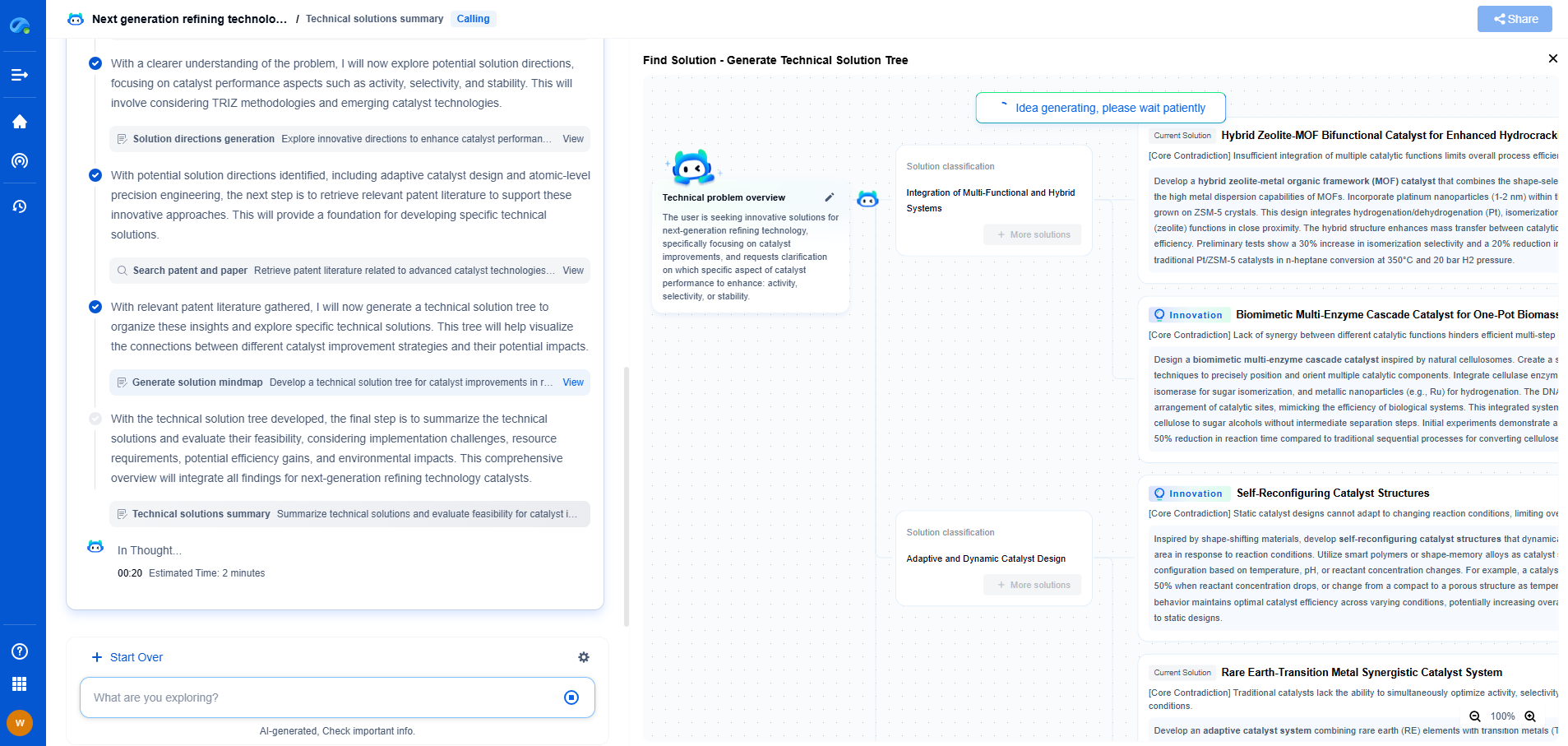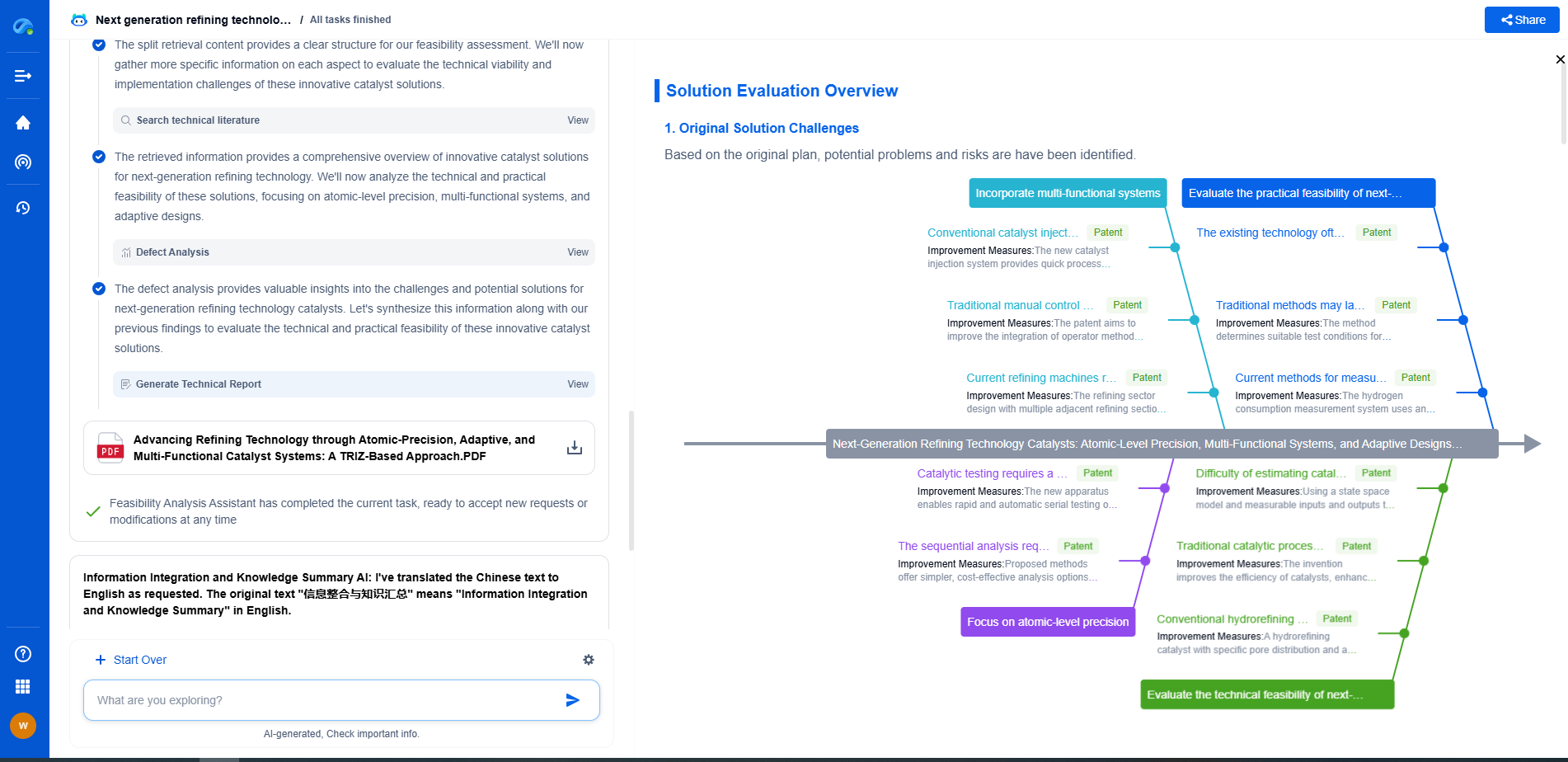Harmonic Distortion in Audio Systems: Identification and Mitigation
JUL 16, 2025 |
Harmonic distortion is a phenomenon that occurs when audio signals are altered due to the nonlinear behavior of components within an audio system. Such distortion can significantly affect the quality of sound by introducing unwanted harmonic frequencies. The primary cause is usually the imperfect linearity of devices such as amplifiers, speakers, or other processing equipment.
When a pure tone is input into an audio system, ideally, the same tone should be output. However, due to harmonic distortion, additional tones at integer multiples of the original frequency can emerge, which are not present in the input signal. These additional tones, or harmonics, can compromise the fidelity of the audio reproduction.
Types of Harmonic Distortion
There are primarily two types of harmonic distortion: even-order and odd-order. Each type affects audio differently and is perceived by listeners in various ways.
Even-order harmonics (second, fourth, sixth, etc.) tend to be more musically consonant, meaning they can actually add a certain warmth or richness to the sound. This is why some audio professionals and enthusiasts prefer tube amplifiers, which naturally introduce even-order harmonics.
Odd-order harmonics (third, fifth, seventh, etc.), on the other hand, tend to be harsher and more dissonant. These are generally less desirable as they can make the sound harsh or unpleasant, especially at higher levels of distortion.
Identifying Harmonic Distortion
Identifying harmonic distortion involves both objective measurements and subjective listening tests. Objectively, distortion can be measured using specialized equipment like an audio analyzer, which quantifies the total harmonic distortion (THD) present in a system. THD is typically represented as a percentage, indicating the proportion of distortion relative to the total signal.
Subjectively, identifying distortion involves careful listening. It may manifest as a slight harshness in tone, particularly when listening to music with complex instrumentation or vocals. Experienced listeners often detect distortion by focusing on these changes in tonal quality.
To further aid identification, audio engineers might employ techniques such as frequency sweeps or test tones. These can help reveal specific frequencies where distortion is most pronounced, allowing for targeted analysis and troubleshooting.
Mitigation Techniques for Harmonic Distortion
Once harmonic distortion has been identified, there are several techniques available to mitigate its effects. These techniques range from equipment upgrades to signal processing adjustments.
1. Component Selection and Maintenance: Choosing high-quality components with superior linearity can significantly reduce harmonic distortion. Regular maintenance, such as checking for worn-out speakers or ensuring proper calibration of audio equipment, also plays a pivotal role.
2. Use of Negative Feedback: In amplifiers, negative feedback is a technique where a portion of the output signal is inverted and fed back to the input. This can help cancel out distortion components, thus improving linearity and reducing harmonic distortion.
3. Digital Signal Processing (DSP): DSP tools can be used to correct or minimize distortion by digitally filtering out undesirable harmonics. These tools are particularly effective in studio settings where precise control over the audio signal is possible.
4. Acoustic Treatment: Although primarily used to address issues like echo or reverb, proper acoustic treatment of a listening environment can also help minimize the perception of distortion, allowing the true characteristics of the audio system to be more accurately heard.
Conclusion
Harmonic distortion is an inherent challenge in audio systems that can detract from the listening experience. By understanding its causes and effects, and by employing a mix of identification and mitigation strategies, audio professionals and enthusiasts can greatly enhance the clarity and quality of sound reproduction. Whether through careful component selection, the use of advanced technologies, or simply a keen ear, the pursuit of minimizing harmonic distortion continues to be a rewarding endeavor in the world of audio.
In the world of vibration damping, structural health monitoring, and acoustic noise suppression, staying ahead requires more than intuition—it demands constant awareness of material innovations, sensor architectures, and IP trends across mechanical, automotive, aerospace, and building acoustics.
Patsnap Eureka, our intelligent AI assistant built for R&D professionals in high-tech sectors, empowers you with real-time expert-level analysis, technology roadmap exploration, and strategic mapping of core patents—all within a seamless, user-friendly interface.
⚙️ Bring Eureka into your vibration intelligence workflow—and reduce guesswork in your R&D pipeline. Start your free experience today.
- R&D
- Intellectual Property
- Life Sciences
- Materials
- Tech Scout
- Unparalleled Data Quality
- Higher Quality Content
- 60% Fewer Hallucinations
Browse by: Latest US Patents, China's latest patents, Technical Efficacy Thesaurus, Application Domain, Technology Topic, Popular Technical Reports.
© 2025 PatSnap. All rights reserved.Legal|Privacy policy|Modern Slavery Act Transparency Statement|Sitemap|About US| Contact US: help@patsnap.com

